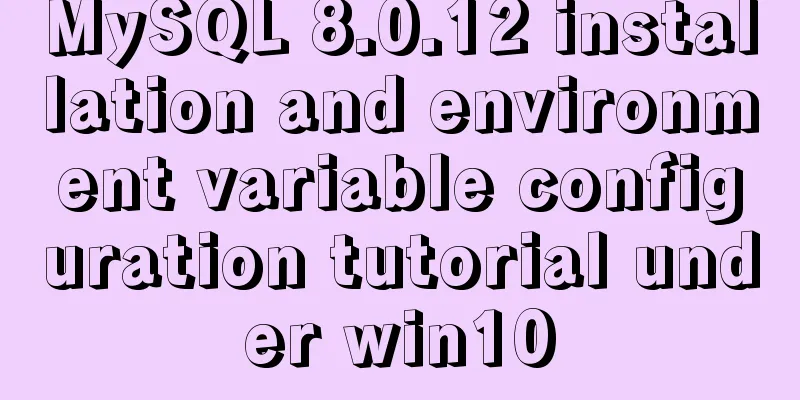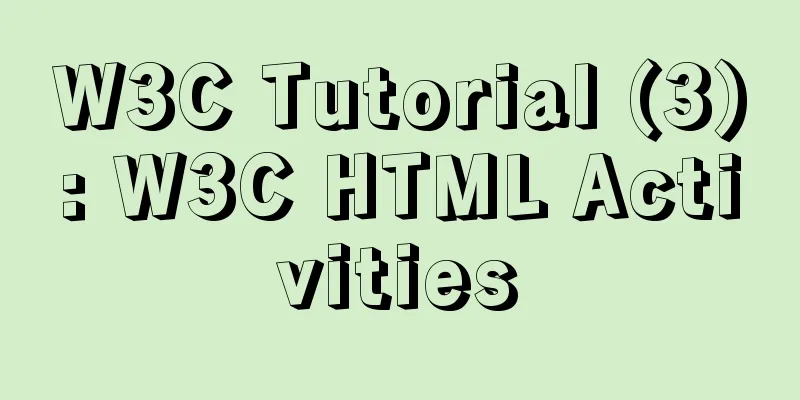Specific use of Bootstrap5 breakpoints and containers

1. Bootstrap5 breakpoints 1.1 Mobile First When it comes to mobile first, we have to mention responsive design first. A responsive interface is to design a page that can adapt to different devices. Responsive design uses technologies such as media queries to achieve style adaptation under different devices/windows. In other words, it will display different page layouts to users based on the different devices you use. 1.2 Bootstrap breakpoints The so-called breakpoint refers to the critical point.
As can be seen from the table above, the screen is divided into 6 sizes through 5 breakpoints. Readers only need to understand them here first. The grid system will be further introduced in the third section. 2. Containers 2.1 Containers are used to hold things Containers are the most basic layout element in Bootstrap and are necessary when designing responsive websites using the default grid system. The maximum width of a container can change according to the width of the browser. The use of containers is very simple. You can directly put the container tag in the inner layer of the body. Generally speaking, a page only needs one container tag to wrap all other visual content. However, in this demonstration, in order to compare the effects of different containers, multiple containers are placed on one page. 2.2 Classification of Bootstrap containersBootstrap's containers are divided into three types by default:
The following table shows the container width at different resolutions.
2.3 Container changes with browser width analysis 2.3.1 Simple Example Some of you may not understand the table in 2.2 very well. Let me give you a few examples: 2.3.2 Several features of Bootstrap container (excluding flow container)
2.4 Demonstration code for container changing with browser width Below is the demonstration code for different browser widths, as well as the GIF effect chart. If you don’t understand, you can download the code and study it yourself. The style part is written by me to set the background color of the container and the interval between each container for easy distinction and viewing, and has nothing to do with the container itself. 2.4.1 Demonstration Animation
2.4.2 Demonstration source code
<!doctype html>
<html lang="en">
<head>
<meta charset="utf-8">
<meta name="viewport" content="width=device-width, initial-scale=1">
<meta name="keywords" content="">
<meta name="description" content="">
<link href="bootstrap5/bootstrap.min.css" rel="external nofollow" rel="stylesheet">
<title>Container width demonstration at different widths</title>
<style>
div{background-color: rgba(0, 0, 255, 0.178);padding: 10px;margin: 10px;}
</style>
</head>
<body>
<div class="container">Default container</div>
<div class="container-sm">container-sm 100% wide until small breakpoint</div>
<div class="container-md">container-md 100% wide until medium breakpoint</div>
<div class="container-lg">container-lg 100% wide until large breakpoint</div>
<div class="container-xl">container-xl 100% wide until extra large breakpoint</div>
<div class="container-xxl">container-xxl 100% wide until extra extra large breakpoint</div>
<div class="container-fluid"> Fluid container</div>
<script src="bootstrap5/bootstrap.bundle.min.js" ></script>
</body>
</html>This is the end of this article about the specific use of Bootstrap5 breakpoints and containers. For more relevant Bootstrap5 breakpoints and containers content, please search 123WORDPRESS.COM's previous articles or continue to browse the following related articles. I hope everyone will support 123WORDPRESS.COM in the future! You may also be interested in:
|
<<: Detailed Tutorial on Installing VirtualBox 6.0 on CentOS 8 / RHEL 8
>>: MySQL 8.0.16 installation and configuration tutorial under CentOS7
Recommend
MySQL Practical Experience of Using Insert Statement
Table of contents 1. Several syntaxes of Insert 1...
The background color or image inside the div container grows as it grows
Copy code The code is as follows: height:auto !im...
New ideas for time formatting in JavaScript toLocaleString()
Table of contents 1. Conventional ideas for time ...
Implementing add, delete, modify and query operations on MySQL based on sqlalchemy
Demand scenario: The boss asked me to use the cra...
MySQL Innodb key features insert buffer
Table of contents What is insert buffer? What are...
How to find slow SQL statements in MySQL
How to find slow SQL statements in MySQL? This ma...
Vue close browser logout implementation example
Table of contents 1. beforeunload event 2. Unload...
Summary of 3 minor errors encountered during MySQL 8.0 installation
Preface In the past, the company used the 5.7 ser...
How to detect whether a file is damaged using Apache Tika
Apache Tika is a library for file type detection ...
Sharing some wonderful uses of wxs files in WeChat applet
Table of contents Preface application Filters Dra...
MySQL implementation of lastInfdexOf function example
Sometimes MySQL needs to use a function similar t...
WeChat applet realizes the effect of shaking the sieve
This article shares the specific code of the WeCh...
Windows10 mysql 8.0.12 non-installation version configuration startup method
This article shares the specific steps for config...
How to use VirtualBox to build a local virtual machine environment on Mac
1. Big Data and Hadoop To study and learn about b...
The process of deploying a project to another host using Jenkins
environment Hostname ip address Serve Jenkins 192...










